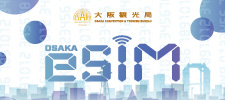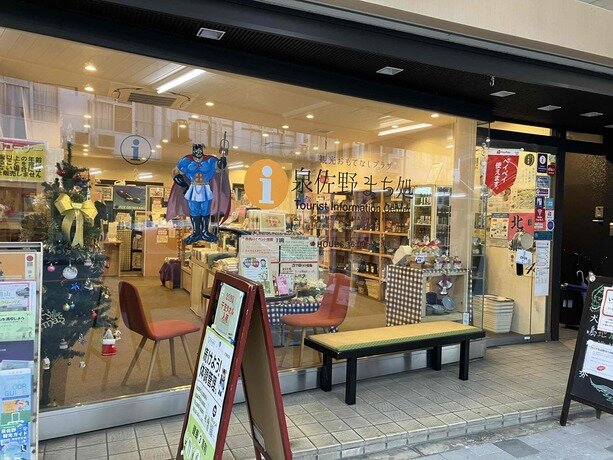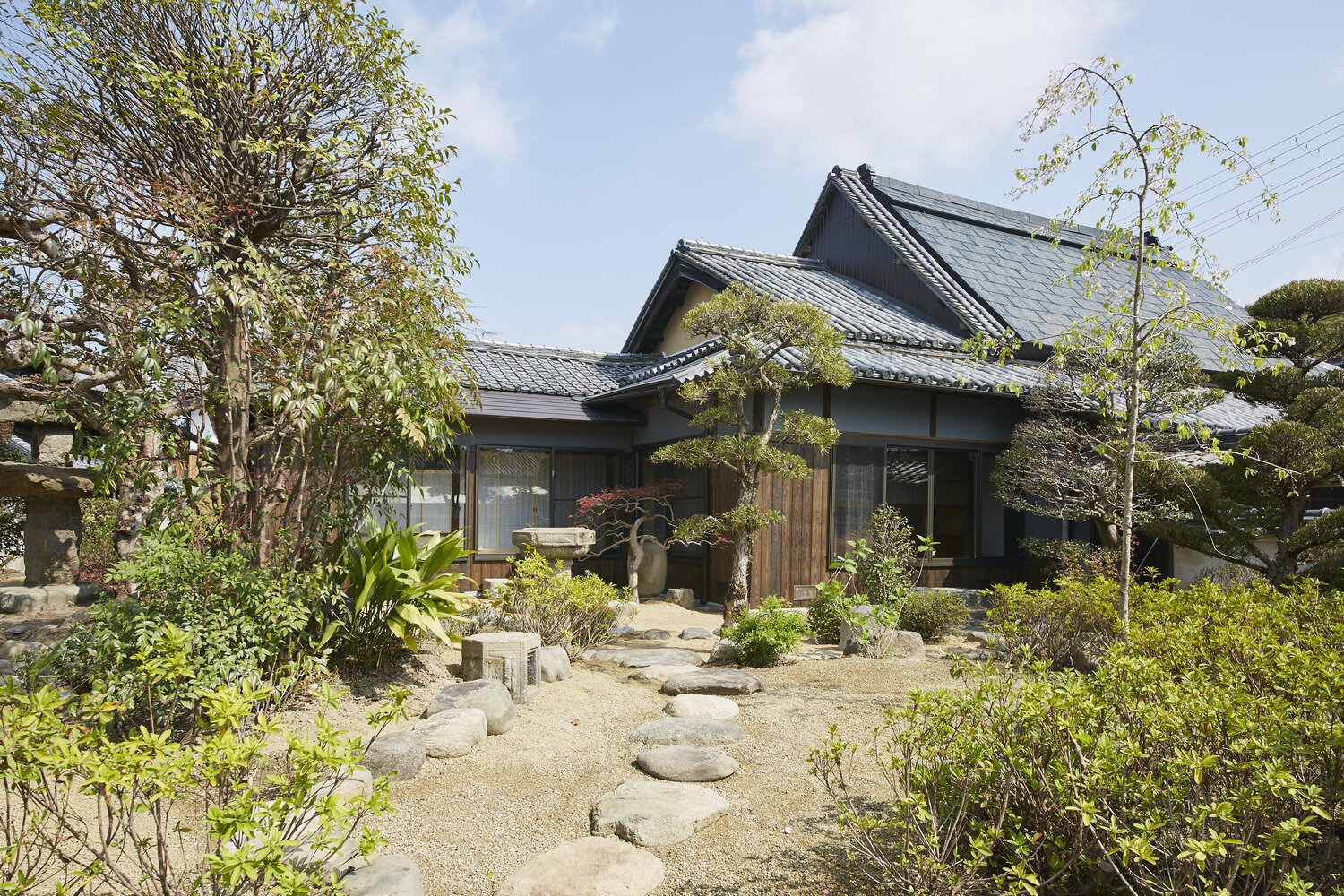
海沿いのまち・田尻から祭のまち・岸和田まで、関空周辺だって外せない!
日本の玄関口、関西国際空港。でも、関空周辺を素通りしている人も多いのでは?関空周辺にだって、見どころがたくさんあるんです。海沿いのまち・田尻では、朝市や漁業体験が楽しめる漁港、かつてのまちの繁栄の面影を残すレトロな洋館など。少し電車に乗って移動すると、日本有数の熱いお祭り「だんじり祭」で有名な岸和田が。美しい岸和田城や祭の熱気を伝えるミュージアム、古いまちなみを残す通り、そしてアウトレットモールなど、風情たっぷりの関空周辺。素通りするにはもったいない!ぜひ関空を利用する際には足を運んでみてください。
-
START
南海電鉄南海線 吉見ノ里駅
-
徒歩13分田尻海洋交流センター

南海本線の小さな駅、「吉見ノ里」で降りると、そこはのんびりとした静かなまち。細い道を歩けば、道沿いには昔ながらの食料品店などがぽつんぽつんと並びます。ふと道が開けてくれば、その先は海。漁船やヨットが所狭しと身を寄せるそばに建つ田尻海洋交流センター。毎週日曜日にはここで朝市が開かれ、魚介類・野菜・果物・天ぷら・漬物・タオルなどさまざまなお店が40店以上並び、大勢の人で賑わいます。また、平日はお寿司屋さんや喫茶店なども営業しています。もっと海を楽しみたい方には漁業体験(要予約)も。目の前に広がる青い海を眺めながら、獲れたての海の幸をふんだんに味わえるバーベキューも人気です。
スポットを見る徒歩13分南海電吉見ノ里駅から岸和田駅へ徒歩12分 -
岸和田城

車窓からも見える岸和田城。現代の町並みの中に突如出現する城の姿は、日本の城下町ならではの光景です。真っ白い壁が陽を反射してまぶしい天守閣は、1827年に焼失したため、1954年に再建されたもの。天守閣3階から西の望むと、遠くに明石海峡大橋や淡路島がうっすらと見えます。また、下をのぞくと一風変わった庭園が。庭園設計の重森三玲氏によるもので、室町以前の城郭平面図をもとに、所々に諸葛孔明の「八陣法」をテーマに、大将を中心として、天・地・風・雲・龍・虎・鳥・蛇の各陣を配したものだそう。
スポットを見る徒歩2分 -
岸和田だんじり会館

岸和田城の堀をぐるりと眺めながら行くと、どっしりと建つだんじり会館があります。ここは、日本を代表する岸和田のだんじり祭を体感できるミュージアム。自動ドアが開くとほの暗い空間をあかあかと灯す、幻想的な無数の提灯。館内にはだんじり祭の迫力ある映像が楽しめるスクリーン、岸和田最古のだんじりの展示、古いまちなみの再現、はっぴや提灯の展示や鳴り物の体験コーナーなど盛りだくさん。なかでもだんじりの3D映像は必見!小さなシアタースペースで3Dメガネをかけて見るだんじりの映像は、実際にだんじりに乗っている目線の高さで撮られていて、揺れ、威勢の良い曳き手たちの熱気などがひしひしと伝わります。また、だんじりに施された精巧な「彫り」も見もの。ひとつの祭にこめられた熱い想いとまちの活気を、ぜひ体感してみてください!
スポットを見る徒歩13分 -
岸和田駅前通商店街・岸和田本通り商店街

だんじり会館の前の道を岸和田駅の方向へまっすぐ歩くと、商店街の通りに交わります。右へ曲がるとアーケードのある「岸和田駅前通商店街」、海側に左へ曲がるとアーケードの無い「岸和田本通り商店街」。駅前通商店街のアーケードはだんじり祭の際にだんじりが勇壮に駆け抜けることができるよう、天井アーチ部分の空間を広くとってあります。面白いのは、あっちのレコード店でも、こっちの文具店でも、そっちのおもちゃ屋さんでも、だんじりグッズが店頭に並んでいること!靴屋さんではだんじり祭に欠かせない「足袋」が並びますが、最近の流行りはエアーの入った「エアー足袋」だそうです。一方アーケードの無い本通り商店街のほうは、昔懐かしい雰囲気漂う、のんびりした通り。レトロな結納屋さんや金物屋さん、岸和田銘菓「村雨」が買える和菓子屋さんなどが並びます。
徒歩10分 -
岸和田カンカンベイサイドモール

岸和田本通り商店街を海のほうへ向かって通り抜けると、突き当たりに岸和田カンカンベイサイドモールの看板が見えます。関西国際空港のそばにはりんくうプレミアムアウトレットがありますが、岸和田にあるこちらは、アウトレットモールとショッピングモールが合体したもの。アウトレットゾーンに加え、ファッション・雑貨・グルメ・アミューズメント・シネコンなどのショップが大集結。中でも見どころは、海に面したシーサイドプロムナードの前に広がるデッキ。ヨーロッパ風の建物の外観も雰囲気たっぷりで、デートにもぴったりです。
スポットを見る - GOAL!
追加情報
- 立ち寄りスポット
- だんじり会館から岸和田本通り商店街方面へ、一本海側の道である「旧紀州街道」を歩くと、あちらこちらに古い町並みが。旧四十三銀行(1919年築)や岸和田中央会館(昭和初期築)など、風情たっぷりの近代建築を見ると、岸和田の繁栄ぶりがうかがえます。
- 味わいスポット
- 岸和田城の城壕のほとりに建つ風情豊かな名園・五風荘は、岸和田の財閥、寺田氏が昭和4年から10年もの歳月をかけて造った邸宅。現在は「がんこ岸和田五風荘」として、日本料理がリーズナブルなお値段から楽しめます。
- お土産
- 岸和田本通り商店街の海側の端にある和柄カジュアルウェアとだんじりグッズの店「看貫場」では、岸和田ならではの本格的な祭礼衣装からお土産にぴったりなミニチュアだんじりやだんじりフィギアまで、レアなグッズが種類豊富に揃います。
車で巡る「大阪」 モデルコース

泉州エリア泉州は、大阪でも有数の水なす、たまねぎ、キャベツ等の野菜の生産地で、漁場も豊かで、食にこだわる大阪人の食文化を支えてきたエリアです。 モデルコースでは岸和田城等の歴史にふれ、泉佐野漁港青空市場・農産物直売所を訪れ、大阪唯一の温泉郷犬鳴山温泉をご紹介します。
公式サイトへ











